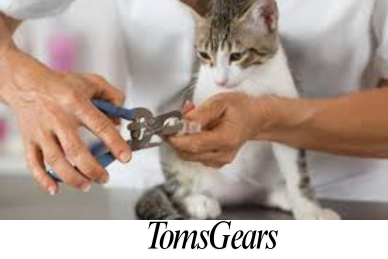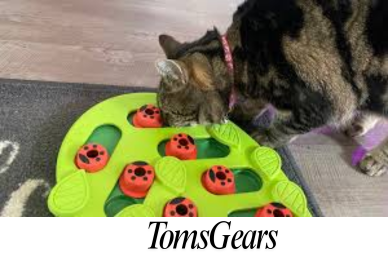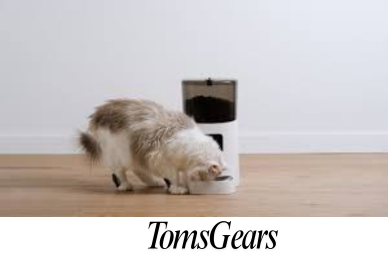Is it Safe to Let Your Cat Outside With a Bell on Her Collar?
Yes, it is generally safe to let your cat outside with a bell on her collar, as long as the collar is a breakaway type and fits properly. The bell can help protect local wildlife by warning birds and small animals of your cat’s presence. However, some cats may find it annoying or stressful, so it’s important to monitor their behavior and adjust if necessary.
Why Put a Bell on Your Cat’s Collar?
Many pet owners choose to attach a bell to their cat’s collar for wildlife protection. Outdoor cats are natural hunters, and even the most domesticated felines can catch and kill birds, small mammals, or other creatures. A bell provides an audible warning, giving prey a chance to escape. This small accessory can help reduce the impact of your cat’s hunting instincts, making it a more responsible choice if your cat roams outside.
Does the Bell Stress Out Cats?
Some cats may find the constant jingling sound bothersome, which could lead to anxiety or agitation. It’s essential to introduce the bell gradually and watch for signs of discomfort:
- Is your cat shaking her head frequently?
- Does she try to remove the collar?
- Has her behavior changed, such as increased hiding or reluctance to go outside?
If you notice these signs, consider removing the bell or trying a softer, less intrusive option.
What Type of Collar Is Best for Cats with Bells?
Always use a breakaway collar when attaching a bell to your cat. Breakaway collars have a safety mechanism that releases under pressure, preventing your cat from getting caught on branches, fences, or other outdoor obstacles. The collar should fit snugly but not too tight—you should be able to slide two fingers comfortably underneath.
Features to look for:
- Breakaway buckle: Ensures your cat can escape if the collar gets snagged.
- Adjustable fit: Proper sizing to keep your cat safe.
- Soft material: Reduces the risk of irritation or discomfort.
Can a Bell Harm Your Cat’s Hearing?
Cats have highly sensitive hearing, and the continuous jingle of a bell may pose a problem. While the sound isn’t typically loud enough to cause hearing damage, some cats may become annoyed or disoriented by it. If your cat seems agitated, opt for a smaller, quieter bell or remove it altogether.
Are There Any Alternatives to Bells for Outdoor Cats?
If a bell isn’t suitable for your cat, consider these alternatives:
- Bird-safe collars: These are brightly colored collars designed to increase your cat’s visibility to birds.
- Cat bibs: Small, fabric bibs attached to the collar that interfere with the cat’s hunting abilities.
- Cat trackers: Use a GPS or radio collar to monitor your cat’s location and reduce outdoor roaming time.
Do Bells Really Work for Preventing Hunting?
Studies show mixed results. While some research suggests that bells can reduce successful hunts by 30–50%, others indicate that experienced hunters can adapt their stalking behavior to minimize the bell’s effectiveness. Therefore, while a bell can help, it may not completely eliminate the risk to local wildlife.
How to Acclimate Your Cat to Wearing a Bell?
To ensure your cat is comfortable:
- Start with short periods: Introduce the bell for just a few minutes at a time.
- Use positive reinforcement: Offer treats or praise when she wears the bell without fuss.
- Monitor her behavior: If she seems stressed, try a smaller bell or a break.
What Are the Risks of Letting Your Cat Outside With a Bell?
The main risks are:
- Snagging: If the collar isn’t breakaway, it could get caught on branches or fences.
- Noise sensitivity: Some cats may be startled by the noise, affecting their behavior.
- Adaptation: Skilled hunters may still catch prey despite the bell.
How to Choose the Right Bell for Your Cat?
- Size matters: Choose a small, lightweight bell that won’t overwhelm your cat.
- Loudness: Test the bell’s sound to ensure it’s not too harsh.
- Durability: Opt for rust-proof metal bells that can withstand outdoor conditions.
FAQ
Can I use multiple bells for better wildlife protection?
Using more than one bell can increase the noise, but it might also overwhelm or stress your cat. Start with a single bell and observe.
Will the bell affect my cat’s balance?
No, a small, lightweight bell should not interfere with your cat’s balance or movement.
What if my cat hates the bell?
Try switching to a different size or material. If she continues to show discomfort, it’s best to remove it.
Are bells recommended for indoor cats?
Not necessarily. For indoor cats, bells can be annoying without providing any significant benefit.
Can other cats hear the bell and bully mine?
Some outdoor cats may be more aggressive if they notice a bell-wearing cat in their territory. Monitor your cat’s interactions to ensure her safety.
Wrapping Up
Letting your cat outside with a bell on her collar can be a responsible choice for protecting local wildlife, as long as the collar is a breakaway type and the bell doesn’t stress your pet. Always monitor your cat’s behavior when introducing new accessories and prioritize her comfort and safety.






